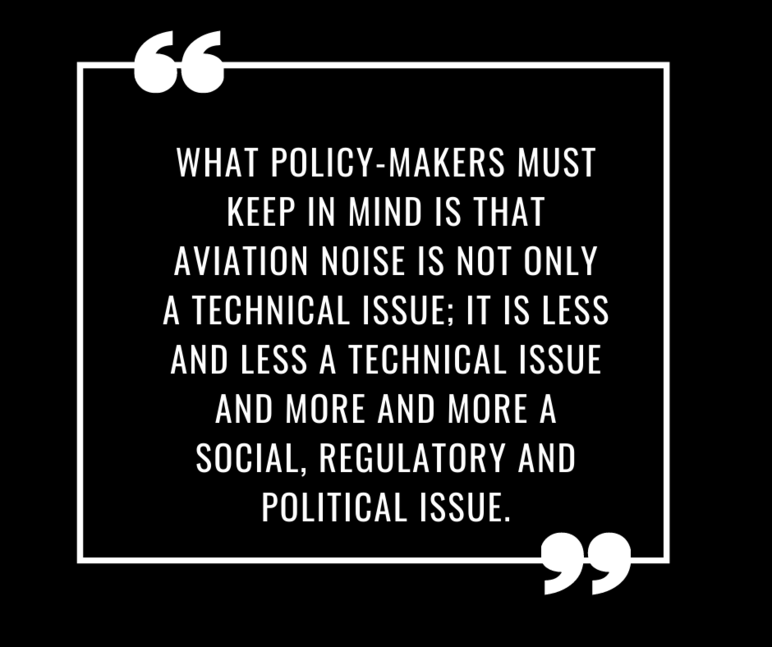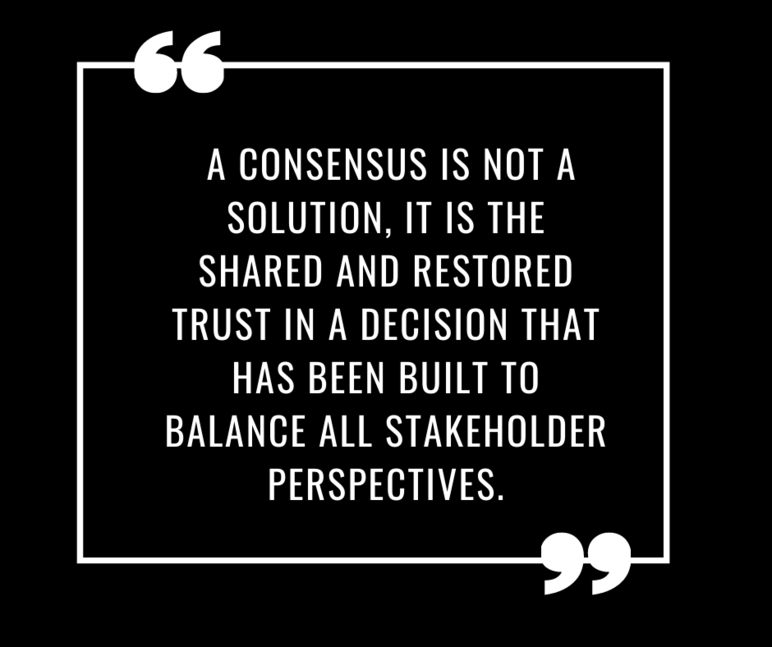The consensus in not the sole solution, shared and restored trust is key, finds ANIMA
March 17, 2021
In a recent interview with the ANIMA project coordinator, Laurent Leylekian (ONERA), more insights about the future of aviation and noise perception are being shared. Will noise disturbance become even more of an issue? How does ANIMA contribute to mitigating noise impact? What are the tools and measures proposed by ANIMA? The interview below covers these questions and much more.
With the number of flights set to keep rising over the next decades, one could assume that noise disturbance will get worse too. What makes you think this can be prevented?
The logic underpinning this question was certainly undisputable before the COVID-19 pandemic. It is no longer the case now. First, because aviation and aviation noise have completely disappeared at the beginning of the pandemic. Second, even if the traffic is starting to resume now, there is a consensus to consider that previous levels of air transport may not be reached again before 2023 – 2024. In the meantime, or for a few years thereafter, other crises such as increasing fuel prices or pollution and associated more stringent regulation may alter again the traffic growth. In this regard, there are real uncertainties on the future of aviation. The Association of European Research Establishment on Aviation (EREA, https://www.erea.org/), which backed ANIMA, is for instance currently elaborating different global scenarios for which the noise issue may take contrasted importance.
To come back to your question, in the short term, one can for instance consider that people will protest again against aviation noise or even against aviation globally speaking in the wake of a generalized flight shame movement. On the other hand, aviation and related traffic may then possibly be welcomed again as part of coming back to normality, a scenario in which aviation noise would be partly or fully overlooked. What policy-makers must keep in mind is that aviation noise is not only a technical issue; it is less and less a technical issue and more and more a social, regulatory and political issue.
What is ANIMA's approach to solving this problem and what makes it particularly innovative?
ANIMA is particularly innovative as it makes the assumption that reducing annoyance due to aviation noise is not only an aircraft engineer issue: expecting to reduce the annoyance only through operating aircraft that are quieter is a dead-end. It does not mean that reducing further aircraft noise is pointless. On the contrary, it is mandatory for manufacturers in a very competitive market and also with regard to more and more stringent certification regulations. But it helps only marginally to relieve the burden of annoyance for airports’ neighbours.
The innovative approach of ANIMA stems from its unique way of associating aircraft engineers with specialists in urban geography, psychologists and sociologists as well as with experts on aviation regulation. Together, they set and evaluate scenarios and they engage dialogue with airports and noise-affected communities in order to capture how interventions to mitigate aviation noise are implemented and how far these steps are effective in reducing annoyance or in improving the quality of life of nearby residents. That is a genuine interdisciplinary approach which departs from the traditional one considering annoyance under the limited scope of noise maps only.

What are the project's main findings related to the issue of aviation noise as perceived by citizens so far?
There is a wide set of findings that are not necessarily brand new but which are probably arranged together in a coherent way for the first time and, above all, which have been consolidated by extensive literature review and exchanges with local communities and various stakeholders on very different types of airports (Heathrow, Schiphol, Marseille, Ljubljana, Frankfurt, Budapest, Iasi, Kiev). As for the health impact and for the non-acoustical factors, it is now definitely proven that noise disturbance is the primary factor to address in order to lower the health impact. This factor is the key mediator between the noise itself and some further physiological (hypertension, stroke) or psychological disorders (fatigue, nervous breakdown, learning capability for children).
Second, as simple as this may sound, any intervention intending to reduce annoyance must be first scoped through guidance and through structured exchanges with communities. You cannot imagine how many goodwill interventions failed just because the preconceived ideas of their promoters did not fit with the actual expectation of the communities. And in this respect, these structured exchanges must be fair: it means that communities must be well-informed with simple language avoiding technical jargon, that all the realistic options must be explained with their consequences, that the standpoints of all stakeholders must be taken into account including those representing economic stakes and not only the most vocal protesters. The difficult point is especially how to reach the silent majority. And it also means that the airport is eventually ready to enact decisions taken by such structured dialogue bodies. It must not be a perfunctory dialogue but a real quest for a consensus. A consensus is not a solution, it is the shared and restored trust in a decision that has been built to balance all stakeholder perspectives.
Third, measures pertaining to the so-called “balanced approach” of the International Civil Aviation Organisation (ICAO) must be enforced as soon as possible and not only once the threshold of 50 000 movements a year is reached. By then it may be to prevent problems as, for example, houses are already too close to the airport runways. Here again, any intervention on flight paths for instance must be brought first to the community and its success (or not) be assessed afterwards. Too many interventions are poorly evaluated and never assessed. And a last word in this respect: metrics to use for such evaluations or assessments must be based on the true concerns of neighbours. It is pointless to lower LAeq levels on a yearly basis if people are sensitive to the number and loudness of individual events at critical times such as the Summer.
Have you identified any technical solutions to solve it? What are those and how can they be implemented?
Unlike previous European projects, in ANIMA we look beyond technical solutions; we also recognize the human behaviour and how measures influence people’s quality of life. We are offering a view on the regulation, on how to implement it, on what to do, what for and what to avoid. The whole will be illustrated by exemplified case studies and by associated guidance, especially for small airports “starting the journey” to mitigate annoyance with scarce internal resources. All these resources will be available via the ANIMA “Noise Platform” that we are currently developing.
We will also provide some tools such as a mobile application that may help airports and authorities to capture dynamically expression of annoyance in order to better typify who is annoyed and during which kind of activity. The “Noise Management Toolset” is another application for airports or local authorities that will help them to compute noise maps but also awakening index in order to test the impact of different scenarios with various fleet compositions and flights. The tool is versatile and may incorporate new types of aircraft, new types of engines, demographic changes or insulation schemes in order to test the impact of these various features.
The ANIMA platform (www.anima-project.eu) will offer access to the project results, such as the best practice cases, the “Noise Management Toolset” and the mobile app.
How do you ensure that airports can afford and actually implement such measures?
This is a key point. For large and experienced airports, such implementation is often already achieved, especially where public opinion demands a response from the airport. Therefore, if some did not implement such measures, this is most of the time not a matter of competence or of cost but of will.
This is not the case for smaller airports, especially in Member States of Central and Eastern Europe. Some of them may be very interested, especially those that are experiencing a fast traffic growth, but they are often lacking awareness: what to do? How to start? How shall we deal with vast quantities of regulatory texts? We are really endeavouring that they will use the ANIMA outcomes in terms of methodology and tools to initiate first steps. We had some very positive feedback from some locations in which, for instance, the dialogue was fully interrupted between the airport and the neighbouring communities. ANIMA actually triggered a resumption of this dialogue.
But the EU may help to go further in a far more ambitious way, especially in the framework of the forthcoming Green Deal. It is probably time to address the issue not only through Research & Innovation Actions (RIAs) but though genuine Innovation Actions (IAs) with a strong return on investment on the short-term. The idea would be to help airports to implement recipes and to use tools developed in ANIMA, maybe in a broader environmental context: local noise issues and global decarbonisation issue may come hand in hand. We must depart from the idea that gaining on the one side would necessarily mean losing on the other. Here again, this is not a matter of finding a solution, but finding consensus. The experience of ANIMA and of its consortium may be very beneficial in this respect and should be exploited. Such IAs for implementing solutions could also give the opportunity for an “Airasmus”: a kind of Erasmus of Airports in which experts from advanced airports could bring their environmental experience and know-how to those starting the journey. In ANIMA, we started recording the best practices used by “pathfinder” airports and we are currently putting them in the Platform mentioned above for airports “starting the journey”. An “Airasmus” may extend this enterprise.

What do you still need to achieve by the time the project comes to an end?
There is some remaining research to be conducted on a few points. First, on the understanding of what annoyance means. The COVID-19 pandemic affected this part of the ANIMA project, as it is psychologically pointless to interview people on their related feelings when the source of trouble has largely disappeared. However, we found ways to remedy this problem by re-analysing past interviews and we are also hoping that we will be able to perform some remaining tasks in spring or summer 2021 when the traffic will have partly resumed.
We have also to complete some technical tasks on defining and evaluating innovative flights scenarios (new tracks, new aircraft) on generic airports. This is helping us to enrich the Aviation Noise Research Roadmap, which is maintained by the full associated European network of experts animated by ANIMA. This Roadmap is an asset of ANIMA that is supporting the European Commission in defining next research programmes. This is something that is certainly worth to be maintained beyond the project, i.e. after 2021.
But above all, we must deliver our top-level outcomes, the platform that will gather the Best Practice Portal, the Noise Management Toolset, Case Studies and associated guidance as previously explained.
What do you hope will be the long-term impact of the project?
First, in terms of outcomes, the actual implementation of such best practices across Europe. It does not mean that everything is already understood on the patterns and mechanisms of annoyance. It does not mean either that research on reducing aircraft noise must be stopped. For both, research is still needed. But we probably know enough to start implementing such practices where they are not implemented.
Second, in terms of methods, the interdisciplinary teams put forward by ANIMA may certainly be an example of what to do to achieve progresses whatever the addressed topic. We see more and more that, unless breakthrough, margins for progress are not within specialised disciplines but at the intersecting limits of different disciplines. This is not the first time in my professional life that I note this point. Therefore, for other topics too, for instance for decarbonisation, and even more if we aim at addressing several topics altogether, it will be required to reproduce the ANIMA consortium scheme. This may be the case if we pretend to address simultaneously paradigmatic changes – for instance based on new technologies and on their massive usage –in terms of economic benefits, climate impact and societal changes. By the way, it seems to me that such a view perfectly matches the increasing will of the European Commission to address research topics in a very transversal way.
